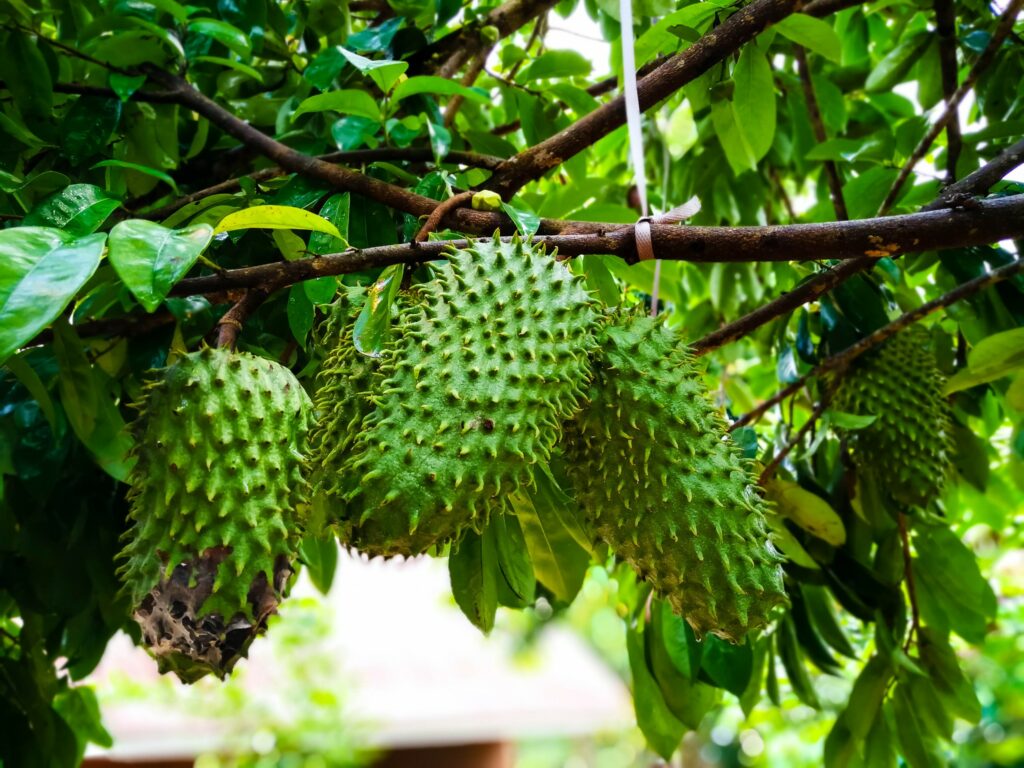Update 9 October 2023 – we have secured commercial Soursop seeds from Brasil, please see our TradeMe listings.
Kia ora! We’re huge fans of Annonas – the soursop (Annona muricata), cherimoya (Annona cherimola), and sugar apple (Annona squamosa) all produce absolutely beautiful fruit. But today, we’re shining the spotlight on the rare-in-NZ soursop.
Are you ready to learn how to grow and care for your very own soursop tree? This exotic beauty is a must-have for any plant enthusiast in subtropical New Zealand who loves the taste of tropical fruits. When I showed my Brazilian wife a soursop tree growing here in NZ, her eyes lit up – back home, they call it graviola and it’s a common sight.
We’ve got our first batch of 100 soursop seeds on their way from a commercial source, so keep an eye out for our seedlings for sale!
In this guide, we’ll cover everything you need to know to successfully grow and harvest soursop in our climate. Get ready to experience the delight of growing your own tropical fruits right here in Aotearoa!

Planting soursop
Soursop, like all Annonas, requires a warm and sunny climate to thrive, so it’s best to plant them in a location that receives at least six hours of direct sunlight per day. They prefer deep, well-drained soil that is rich in organic content. If you live in a cooler area of NZ, it’s important to note that the tree requires substantial protection from cold winds and will not tolerate anything more than a light frost. Therefore, it’s best to grow them in a pot or container, especially if you live in a cooler region. They are slightly less hardy than its relative the cherimoya, so if your area is too cool for cherimoya you aren’t likely to do well with soursop.
When you receive your tree, it’s probably best to keep it in pots for a few years until the stem turns brown. This will make it more hardy and better able to survive being planted out.
Watering
It needs a lot of watering, especially during the summer months. The soil should be kept moist but not waterlogged, as overwatering can lead to root rot. It’s best to water your tree in the morning or evening when the temperature is cooler, as this will help to prevent evaporation and ensure that the water reaches the roots.
Fertilising
It’s a hungry plant, and it requires regular fertilisation to produce healthy and delicious fruit. Before applying fertiliser, it’s important to loosen the topsoil without disturbing the roots of the plant, so it can absorb the nutrients and moisture. We recommend using a slow-release fertiliser that is high in potassium, as this will help to promote fruit development.
If planting in the ground we suggest planting at least two comfrey plants around it to support nutrient uptake.
Soursop Needs Wind and Frost Protection
Soursop is a sensitive plant that requires protection from high winds and frosts. During the flowering season, it’s important to cover the tree with protective material, such as a frost cloth or blanket, to allow the fruit to set. In cooler areas, it’s best to grow the tree in a pot or container and bring it indoors once the weather starts to get cold.
Harvesting
It could start fruiting within 3-5 years of planting, under optimal conditions. The fruit has a unique flavour that’s a combination of sweet and tangy pineapples, mango, American pawpaw, and a hint of strawberry. When harvesting the fruit, it’s important to wait until it’s fully ripe and has a slightly soft texture. You can then cut the fruit from the tree using a sharp knife or pruning shears.
So there you have it. The soursop is a rare and exotic fruit tree that’s worth adding to your collection if you’re a plant enthusiast in New Zealand. With the right care and attention, this tree can provide you with delicious, creamy fruit that’s perfect for eating raw, making drinks or sorbet/ice cream, jellies and jams or candies. As long as you plant it in a warm and sunny location, water it regularly, fertilise it with potassium-rich fertiliser, and protect it from wind and frost, your soursop will thrive and produce delicious fruit for years to come.
